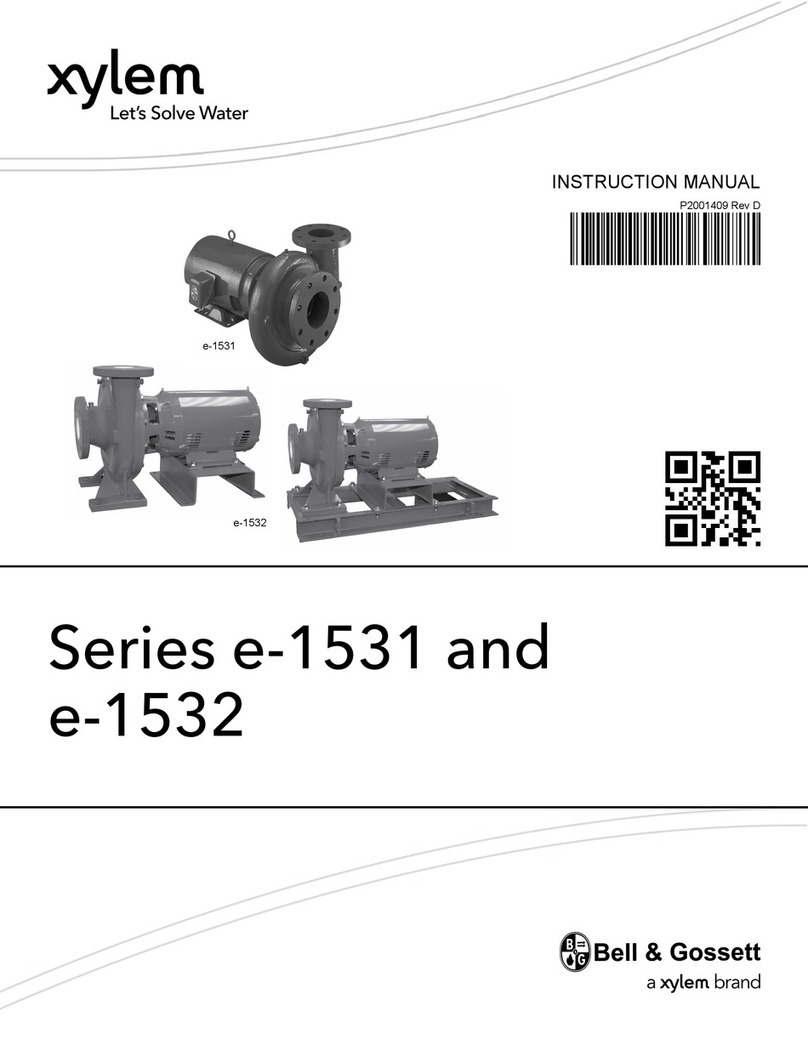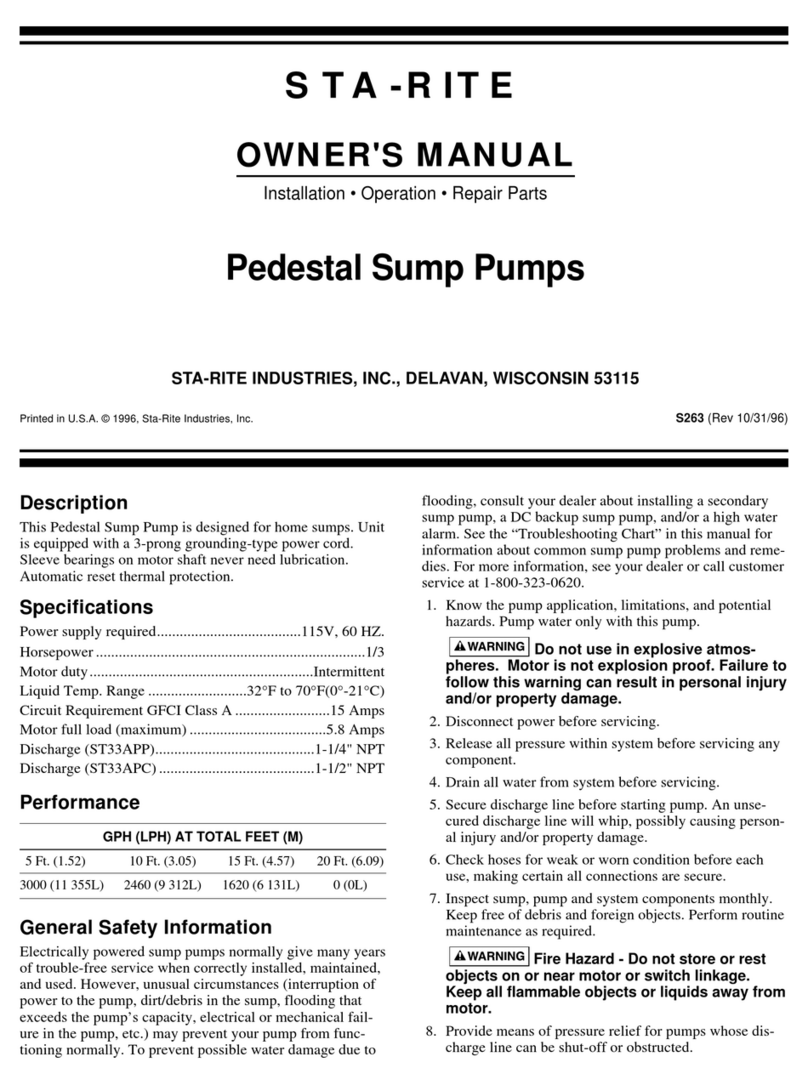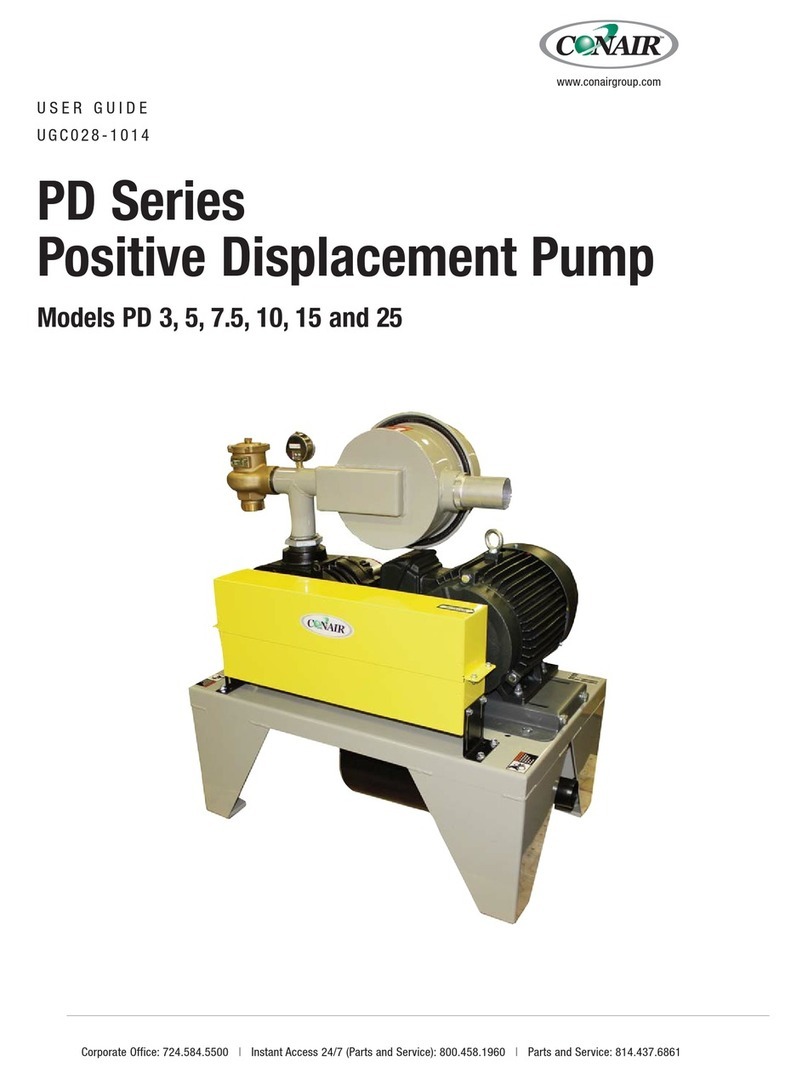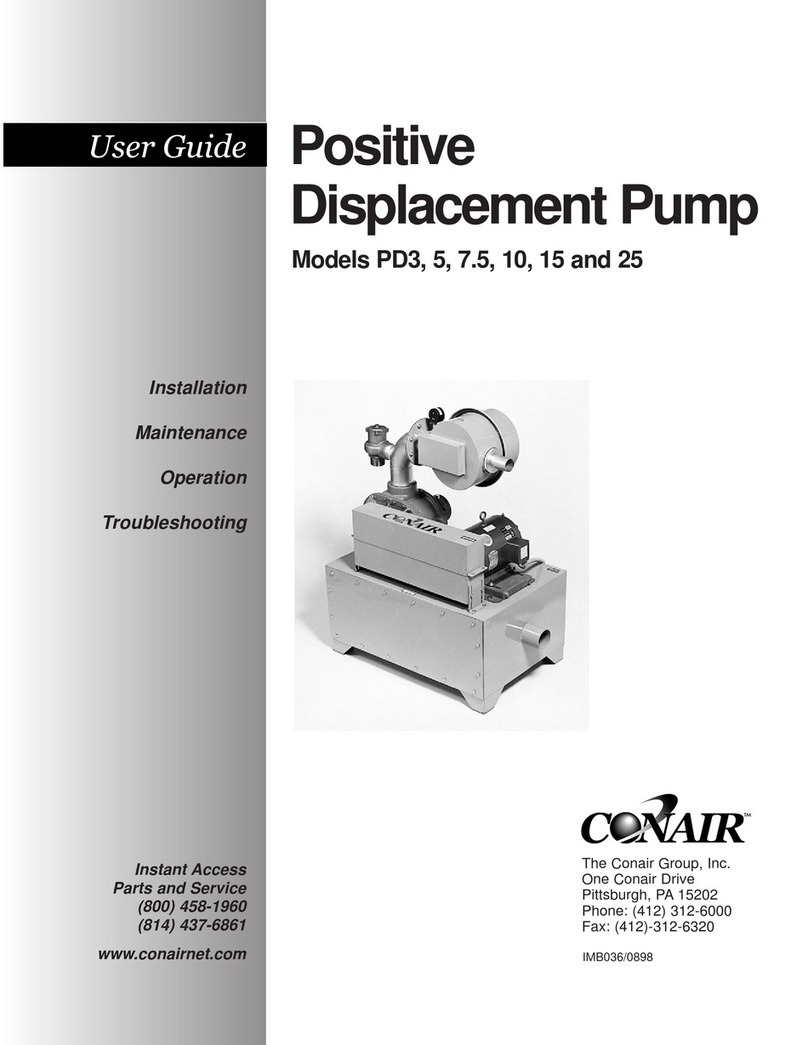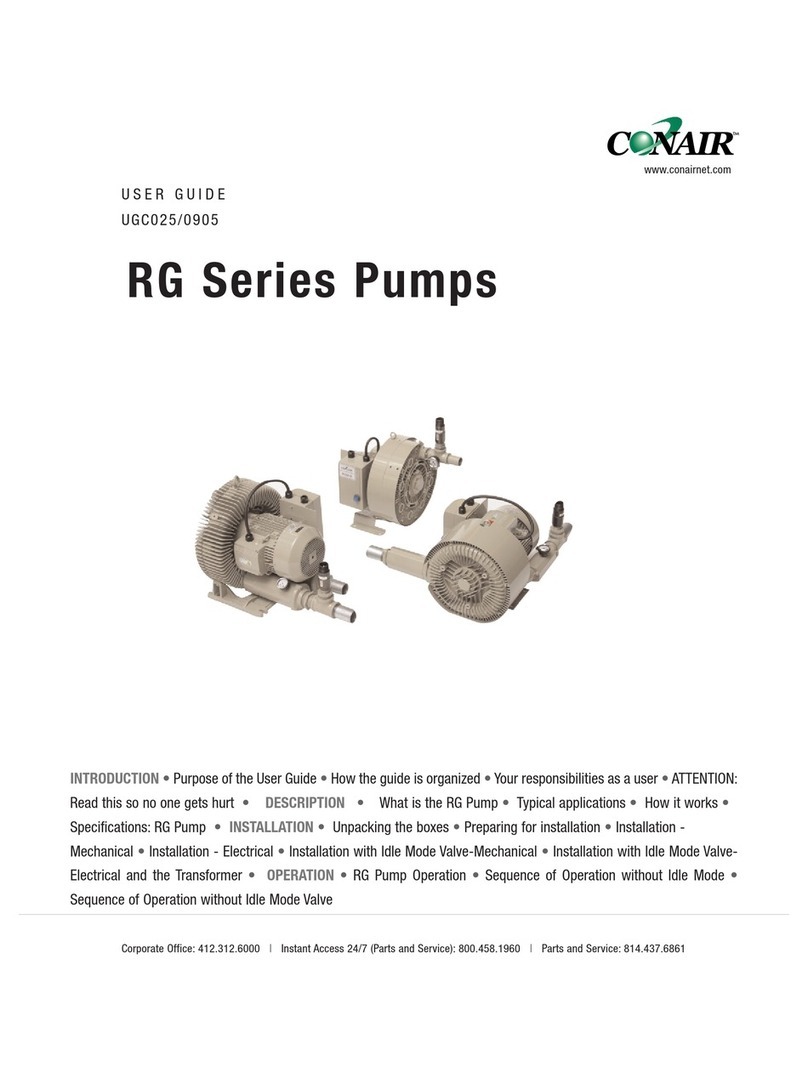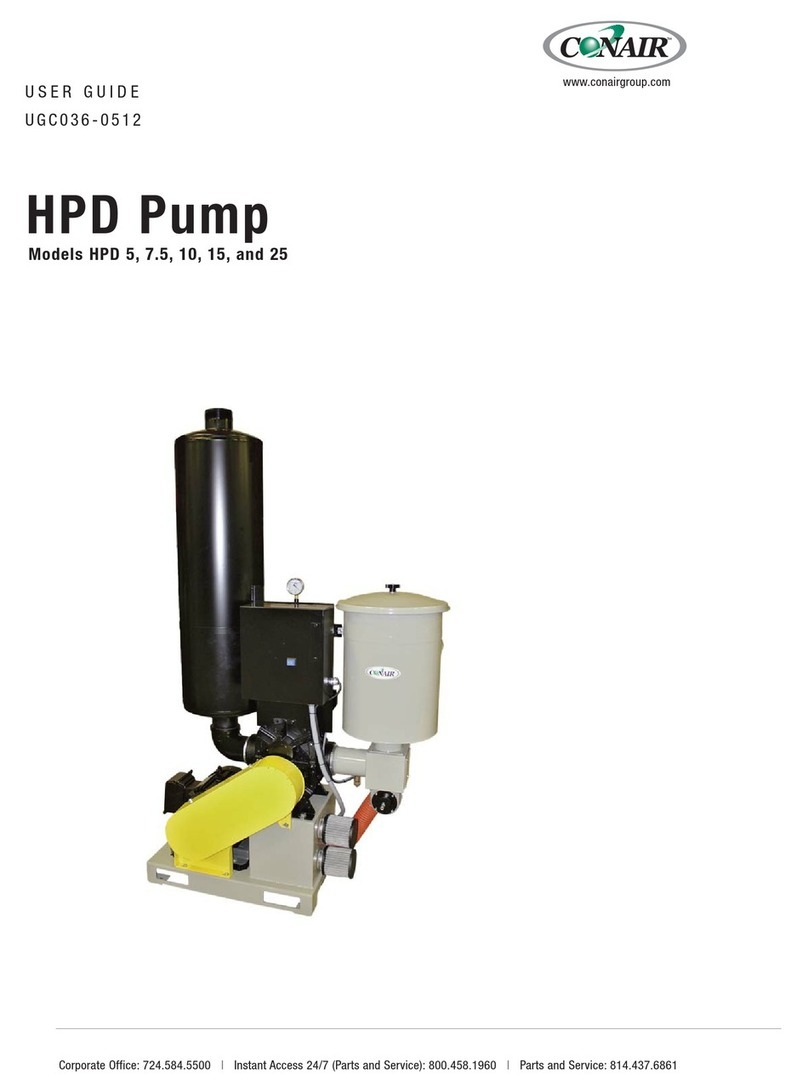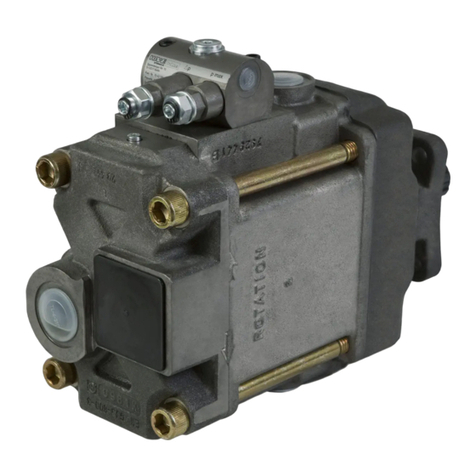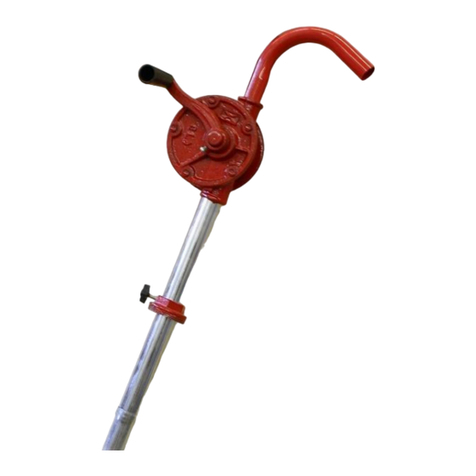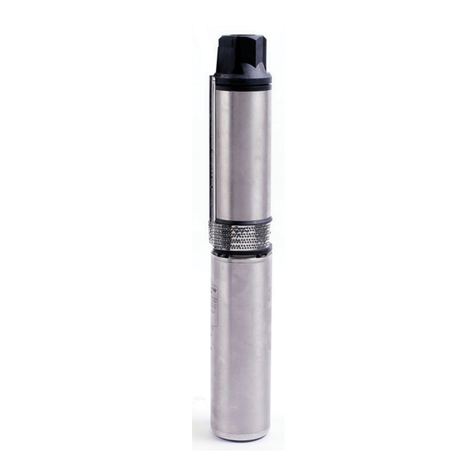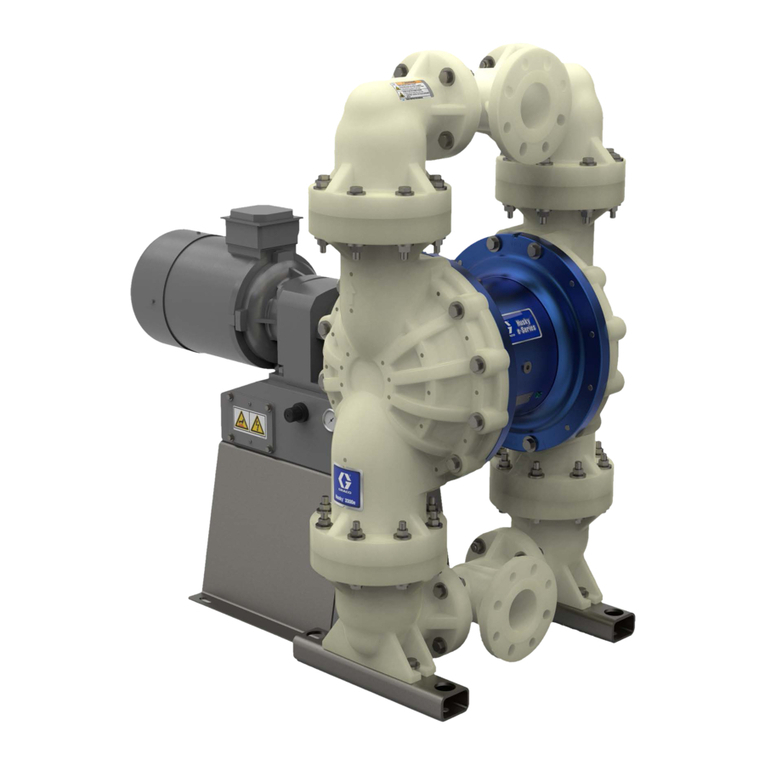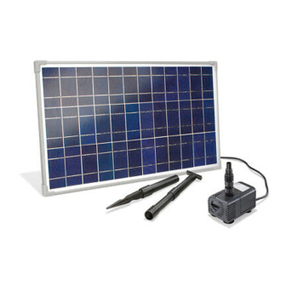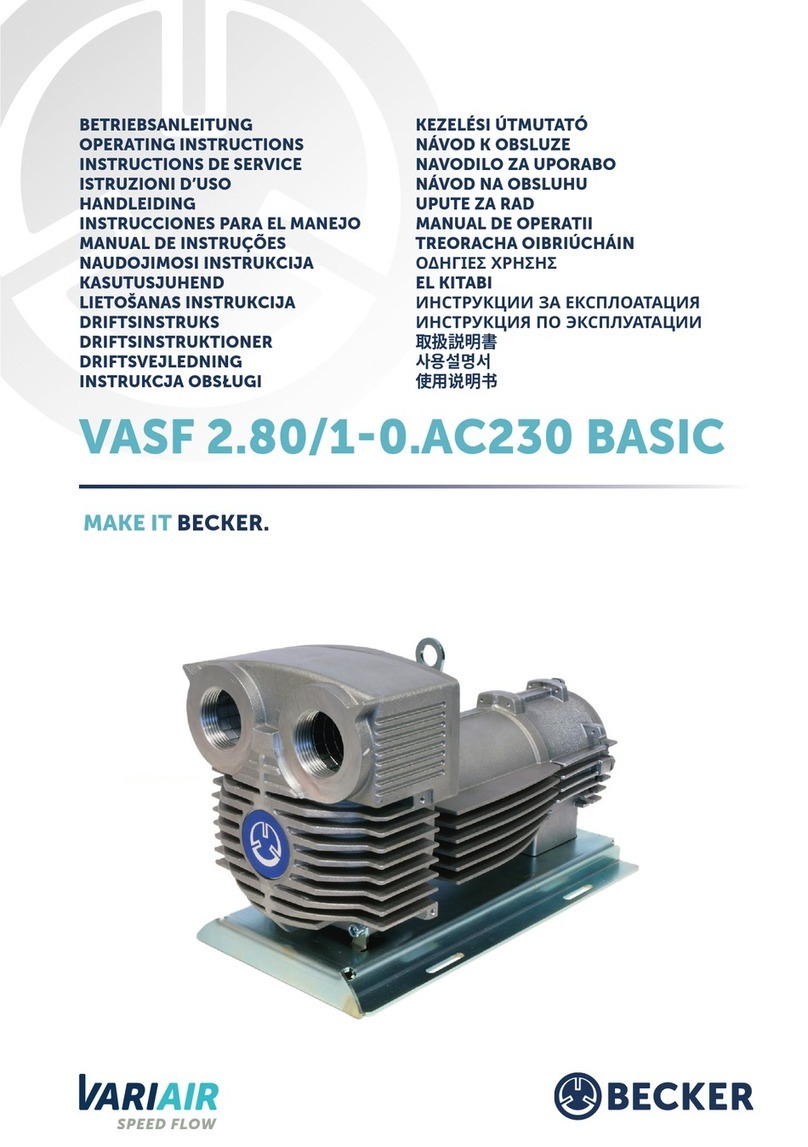✐
Purpose of the User Guide
This User Guide describes the Conair LDP, or Long Distance Pump and explains step-by-
step how to install and operate this equipment.
Before installing this product, please take a few moments to read the User Guide and review
the diagrams and safety information in the instruction packet. You also should review man-
uals covering associated equipment in your system. This review won’t take long, and it
could save you valuable installation and operating time later.
How the Guide is Organized
Symbols have been used to help organize the User Guide and call your attention to important
information regarding safe installation and operation.
Symbols within triangles warn of conditions that could be hazardous to users or could damage equip-
ment. Read and take precautions before proceeding.
Numbers indicate tasks or steps to be performed by the user.
A diamond indicates the equipment’s response to an action performed by the user.
An open box marks items in a checklist.
A circle marks items in a list.
Indicates a tip. A tip is used to provide you with a suggestion that will help you with the maintenance and
the operation of this equipment.
Indicates a note. A note is used to provide additional information about the steps you are following
throughout the manual.
Your Responsibility as a User
You must be familiar with all safety procedures concerning installation, operation, and
maintenance of this equipment. Responsible safety procedures include:
•Thorough review of this User Guide, paying particular attention
to hazard warnings, appendices, and related diagrams.
•Thorough review of the equipment itself, with careful attention
to voltage sources, intended use and warning labels.
•Thorough review of instruction manuals for associated equipment.
•Step-by-step adherence to instructions outlined in this User Guide.
1
◆
❒
•
✒
1-2 l Introduction



